Southern Hills Country Club will make its return to major golf this week at the PGA Championship. It will be the eighth time that the club has hosted a major but the first time since the 2007 PGA, which Tiger Woods won.
Thanks to a historical renovation completed by Hanse Golf Course Design in 2018, many viewers will hardly recognize the course. There are new-look bunkers, new tees, and restored green edges, all of which have given Southern Hills extra teeth. Director of Golf Cary Cozby estimates that the post-renovation course plays four shots harder for membership.
The challenges of Southern Hills are now more subtle than they were 15 years ago. Designed by Perry Maxwell in 1936, the devilish greens are small targets surrounded by short grass. The difficulty of the greens creates an urgency to find the fairway off the tee to be able to control distance and spin on approach shots. Around the greens, shaved surrounds will allow for an array of shot options, which should encourage the short-game magicians among today’s pros to showcase their skills. Finally, as its name connotes, Southern Hills is not a flat course. Players will find it difficult to “bomb and gouge” their way to the title.
Here are some other primer notes on what to watch for at Southern Hills during the 2022 PGA Championship:
The 10th hole
The restored 10th hole at Southern Hills embodies the key themes of Hanse’s historical renovation: tree removal, fairway expansion, creek restoration, and added short grass around the greens.
It’s a shortish par 4 with a creek that winds down the left side before cutting across the fairway about 300 yards from the championship tee. Before Hanse’s work, trees obscured the creek and lined the left and right sides of a narrow fairway. By removing trees and expanding the fairway to the left, the strategy of the hole was brought back. Playing to the left off the tee, near the creek, makes the hole longer but affords a flatter lie and better angle into one of the toughest greens on the course. Playing right may shorten the hole, but it leaves a tough sidehill lie.
The green is benched into a severe hill, slopes significantly from back to front, and has a classic “Maxwell roll” in the middle. This small undulation makes finding the pinned section of the green a near-prerequisite for making birdie. Misses to the left may roll 30 to 40 feet down the hill. In 2007, this slope was covered in rough, creating a buffer. Now it’s all unforgiving short grass, which becomes particularly relevant when players approach the green from the right side of the fairway. There, the angle brings the left side of the green more into play, and the lie promotes a left miss.
-
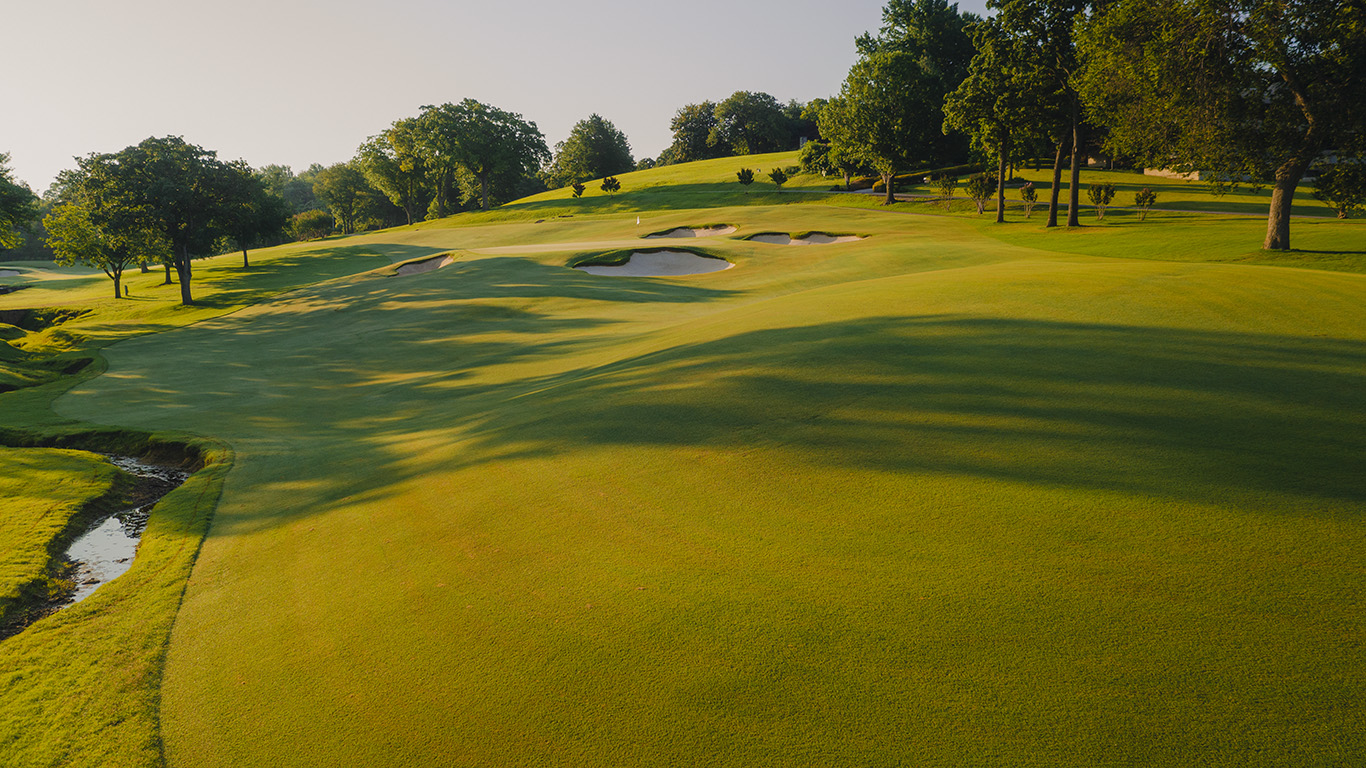
The 10th hole at Southern Hills. Photo: Andy Johnson
-
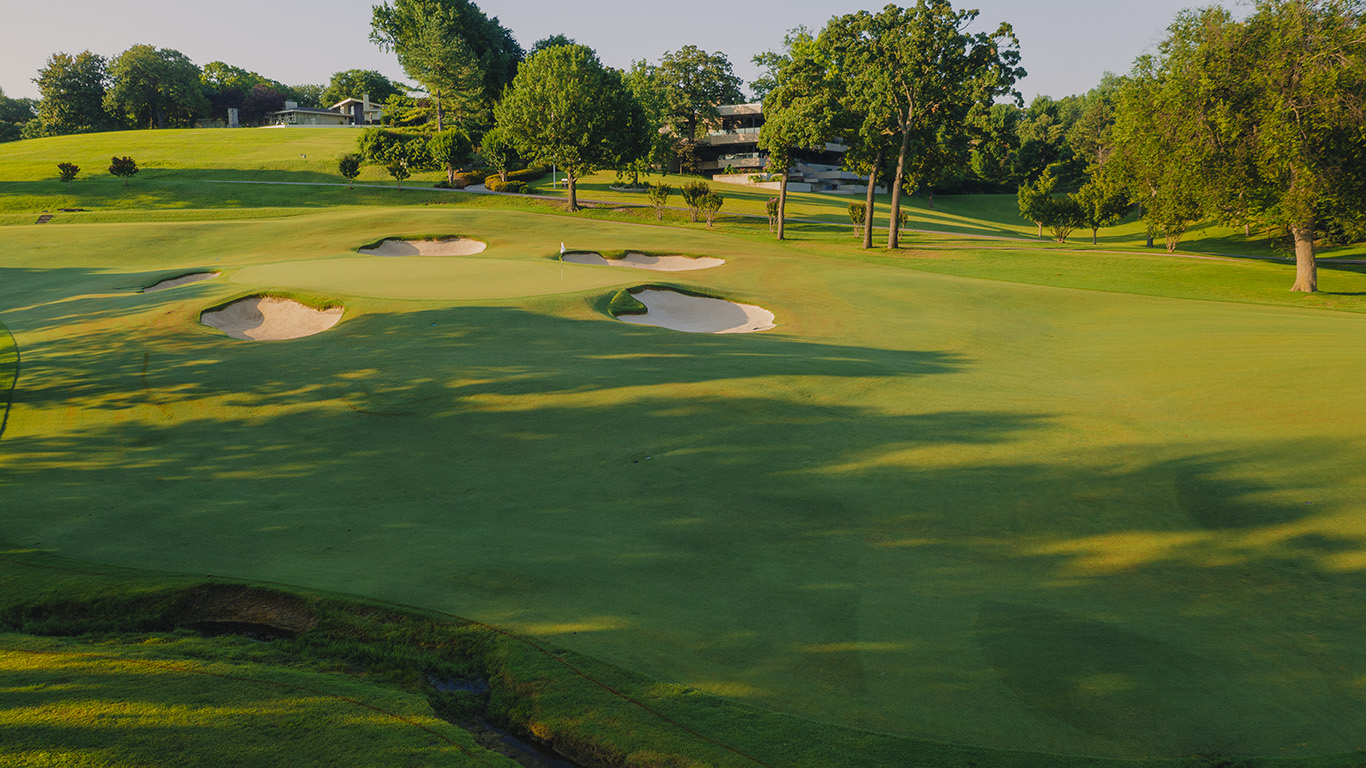
The 10th hole at Southern Hills. Photo: Andy Johnson
-
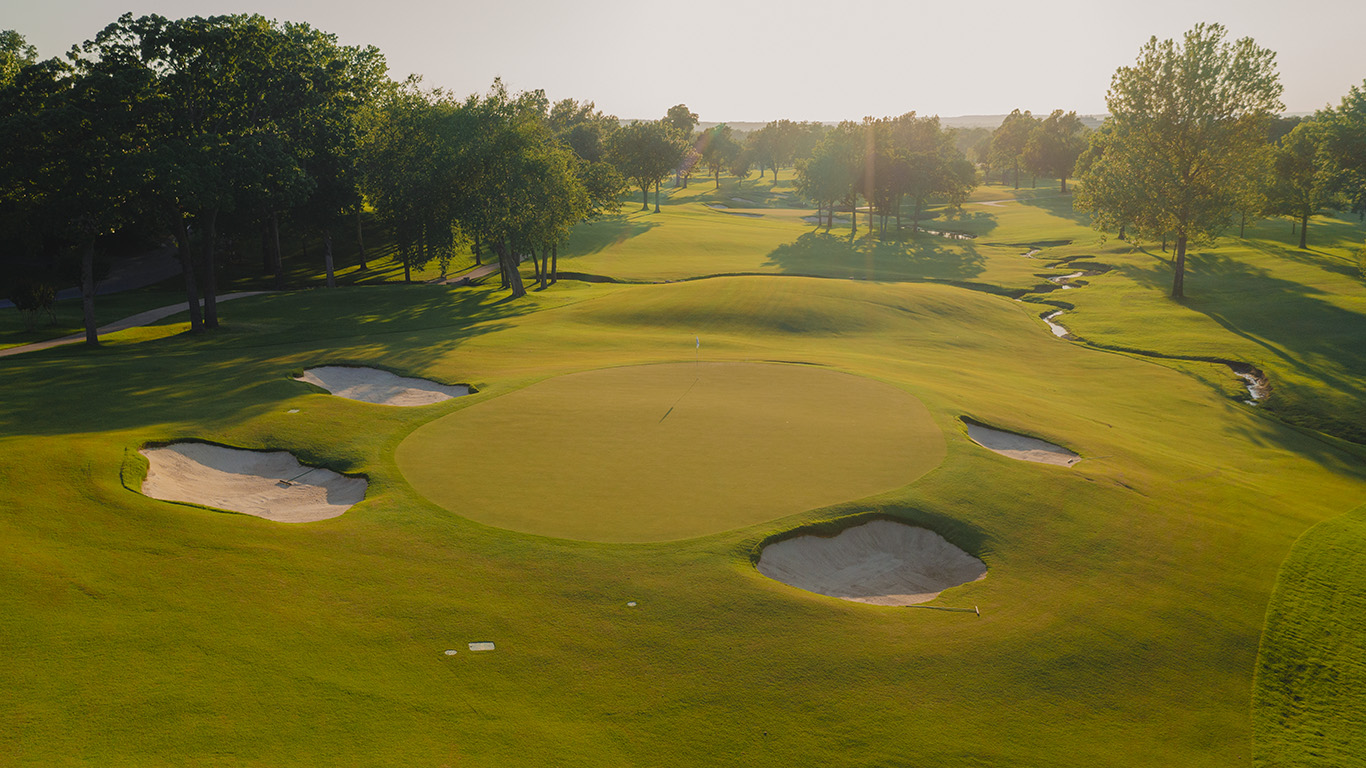
The 10th hole at Southern Hills. Photo: Andy Johnson
No. 10 should be a very fun hole to watch. Some longer player may even decide to bypass the strategic options in the fairway and go bombs-away at the green.
The entrance to the cauldron
As Garrett Morrison argued in the video above, the first hole at Southern Hills is one of the most dramatic openers in all of golf. One underrated reason for this is the location of its green: right in the middle of the action. The first green sits near the third, seventh, eighth, and 17th greens as well as the second, fourth, ninth, and 18th tees. This area will be a raucous scene, particularly on the weekend. It will have the kind of bustle and energy, with all the roars and gasps, that players encounter on the second green at Augusta National. This atmosphere, coupled with the difficulty of the hole, will hardly be a “gentle handshake” at the start of the round. Winning major championships is a mental struggle, and the opener at Southern Hills won’t make it any easier.
The two main landforms
Working during the Great Depression and with a lower budget than many “Golden Age” golf architects were accustomed to, Perry Maxwell didn’t have much freedom to move dirt and create big features. But Maxwell, who scorned steamshovel-dependent designers, actually preferred to rely on natural landforms. The biggest of these at Southern Hills are the ridges on the outer edges of the property and the creeks that wander through the flats. Every par 4 and par 5 on the course encounters one or both of these features, which means the round has very few lulls.
The creeks will be most visible on the second, third, fourth, fifth, sixth, seventh, ninth, 10th, 11th, 12th, 17th, and 18th holes. But on a few other holes, dry, grassed-over gullies, which were shaped by water long ago, will come into play. The channels running across the landing zones of the 13th and 16th holes will be especially important.
As for the topography at Southern Hills, the features are varied in size. There are the climbs up the clubhouse hill on the fourth, ninth, and 18th holes as well as more human-sized contours, such as the rumples in the 17th fairway. Almost every shot on the course requires the player to account for an uphill or downhill slope or a sidehill lie—and often both.
-
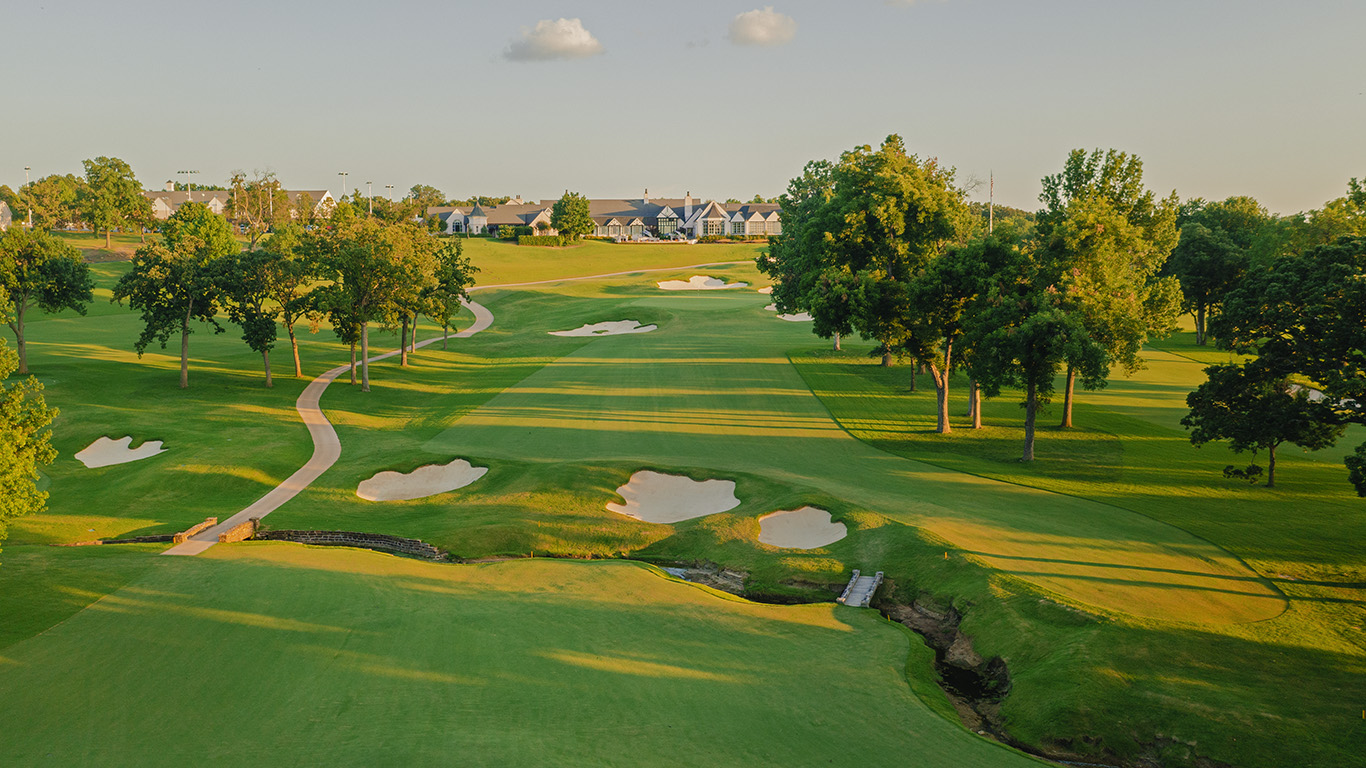
The 18th hole at Southern Hills. Photo: Andy Johnson
-
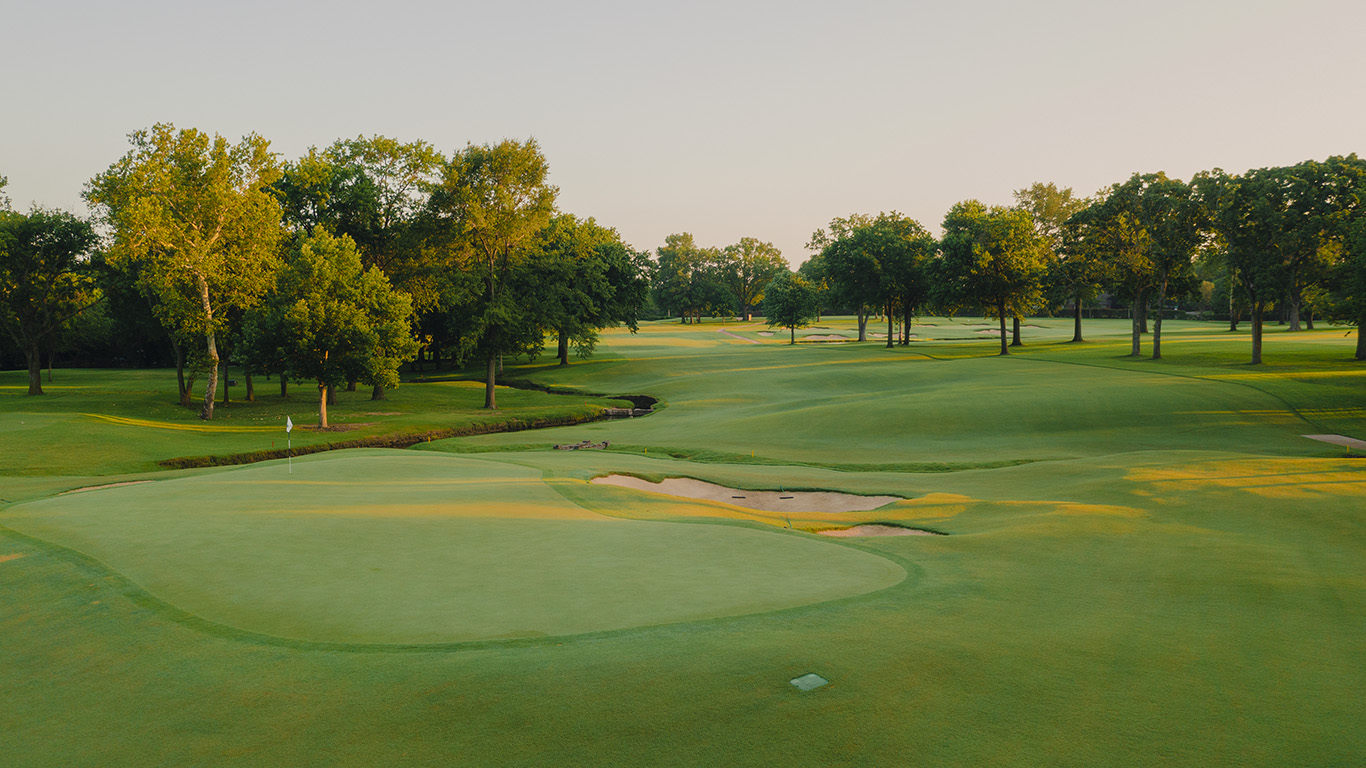
The 17th hole at Southern Hills. Photo: Andy Johnson
The creeks and hills at Southern Hills create a unique tapestry for golf, and Maxwell’s design fully embraces its natural setting.
The connector par 3s
Not every part of the Southern Hills property is ideal for golf. There are a few flat spots as well as some severe stretches with sudden elevation changes. Maxwell navigates these tricky sections with par 3s. The sixth, eighth, and 14th holes all sit on flattish land, but Maxwell keeps the interest level high with a creek on six, striking undulations in the eighth green, and a bunker complex on 14. The 11th hole, on the other hand, occupies a severe valley that would not be suitable for anything other than a short par 3.
-

The 11th hole at Southern Hills. Photo: Andy Johnson
-
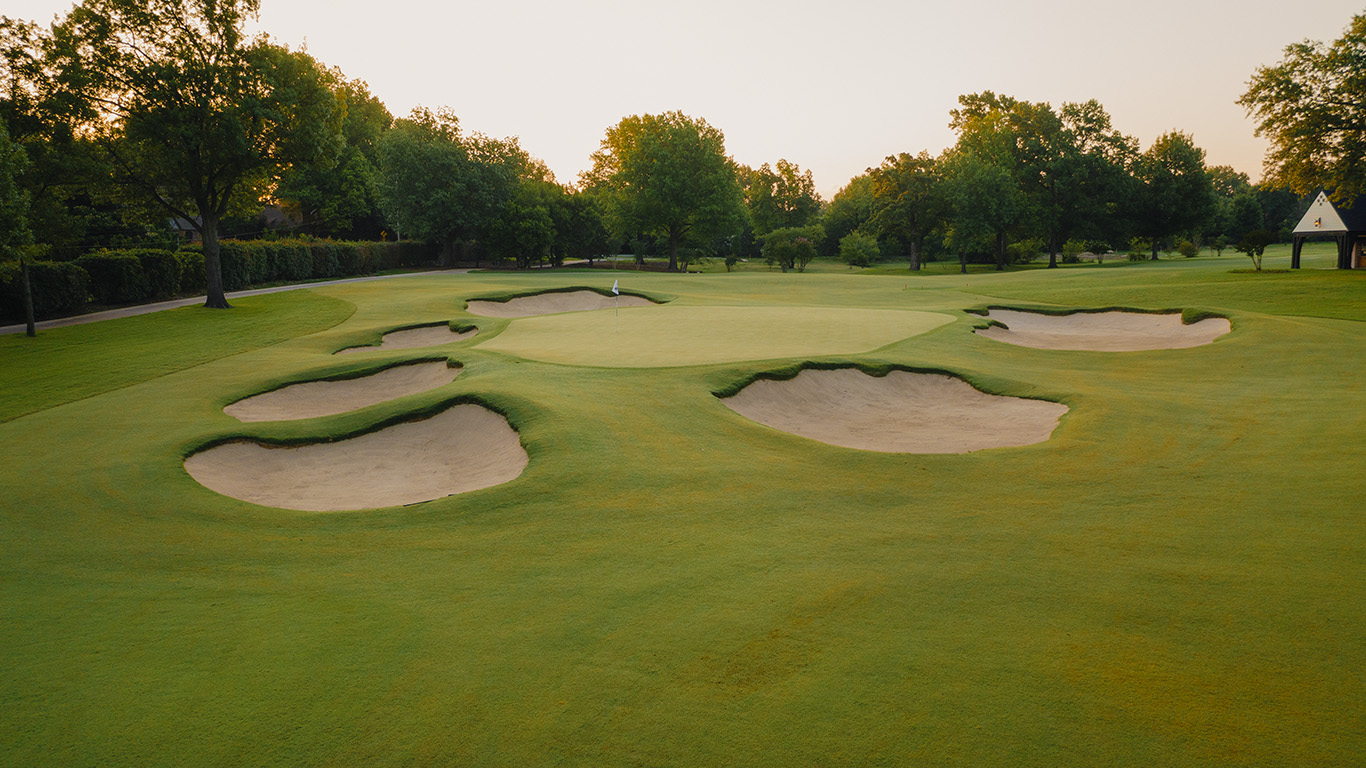
The 14th hole at Southern Hills. Photo: Andy Johnson
-

The eighth hole at Southern Hills. Photo: Andy Johnson
-

The sixth hole at Southern Hills. Photo: Andy Johnson
So Maxwell’s overall routing strategy at Southern Hills was to drape the long holes over the property’s best landforms and use the par 3s as connectors over the problematic sections. It’s a brilliant ploy, allowing the topography to generate strategy on the par 4s and 5s while trusting that simple design features—a creek, a green contour, a bunker—can help a par 3 stand out.
The Bermuda rough
During the PGA Championship, one of the most compelling elements of Southern Hills will be the Bermuda rough. When kept at the manageable height, as it’s planned to be, this type of rough provides an excellent test because of its unpredictability. One lie may look like a flyer but end up coming out dead; another lie may look like a dead one and end up 20 yards over the green.
But since the rough will be kept at two-and-a-quarter inches, it should entice players to be aggressive and attempt bold recovery shots. In this way, it will be different from the hack-out rough at The Country Club that we’ll see at the U.S. Open later this year. The shorter Bermuda rough at Southern Hills will offer the real opportunity to recover but at the risk of disaster. This makes for a far more entertaining style of golf.
Because of the quality of the course and the corresponding storylines of Scottie Scheffler, Jordan Spieth, and Tiger Woods, this year’s PGA Championship could be the event of the year.
MORE PGA COVERAGE FROM THE FRIED EGG
- A video with Gil Hanse on what the pros will confront at Southern Hills
- The Restoration: Southern Hills and the future of championship golf
- Paulie’s Picks: Attributes and players to consider for the PGA
- What to Know About Perry Maxwell: The life, work, and philosophy of the architect behind Southern Hills
- Oklahoma and Maxwell-themed T-shirts for the 2022 PGA


 by
by 
